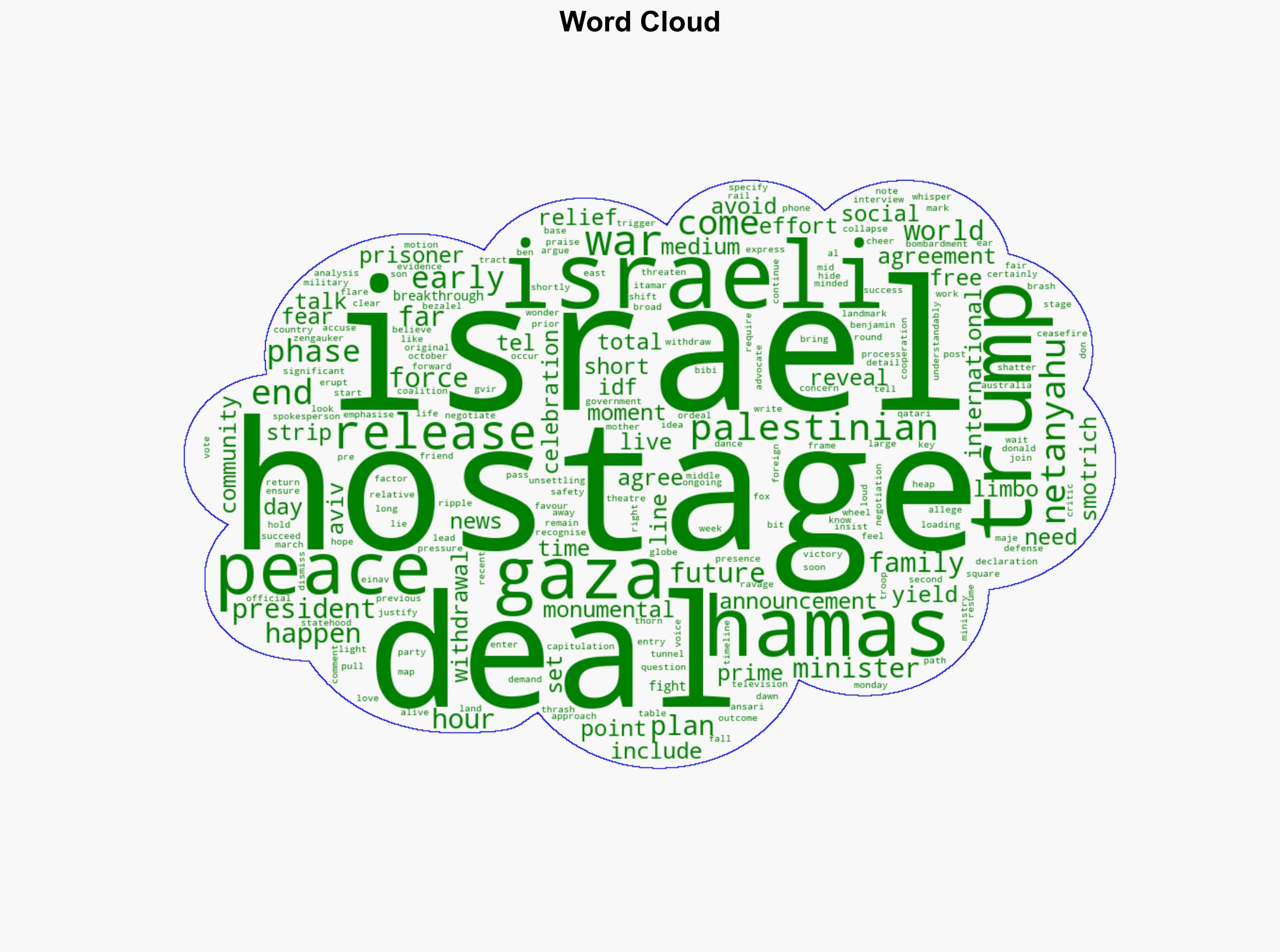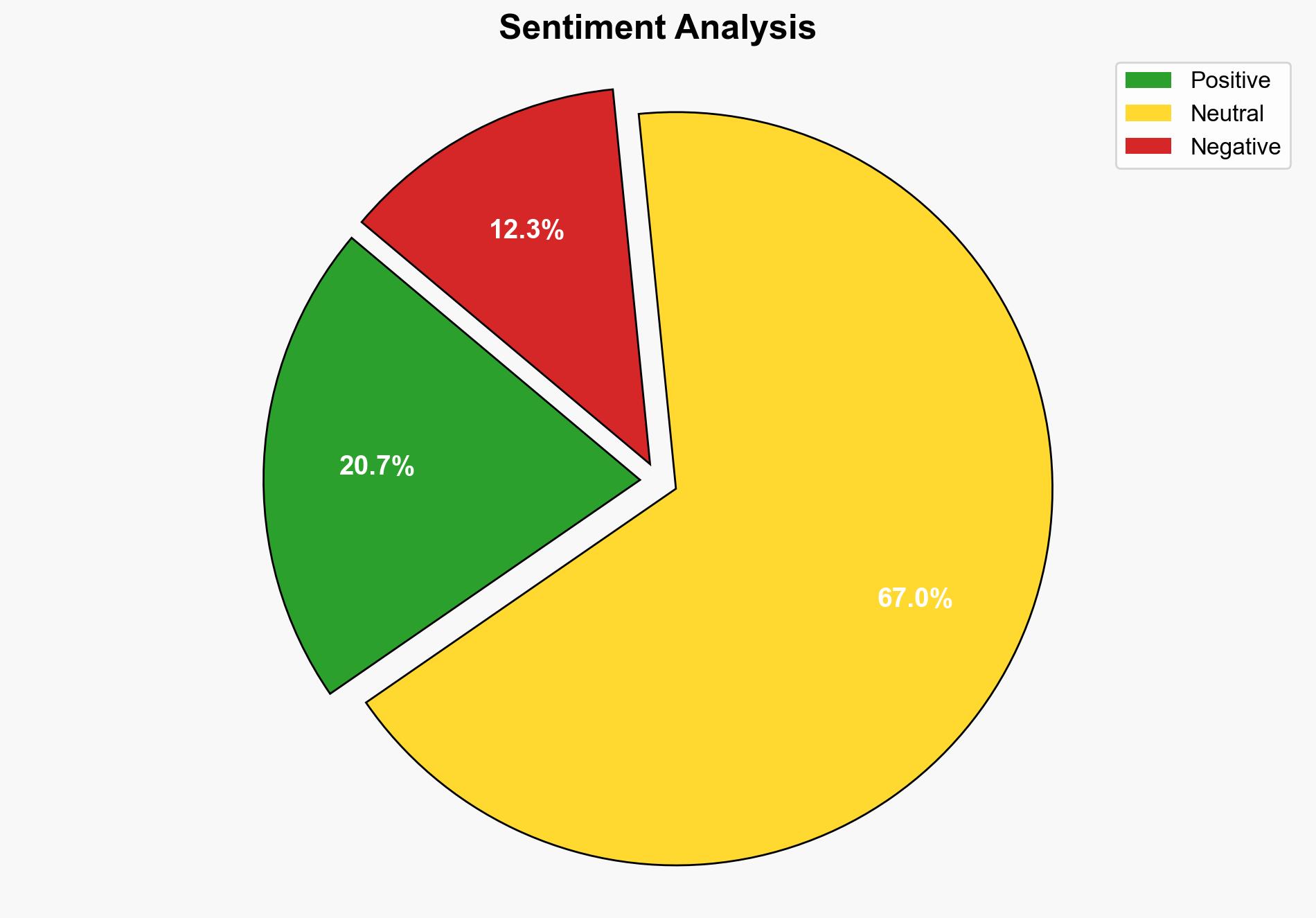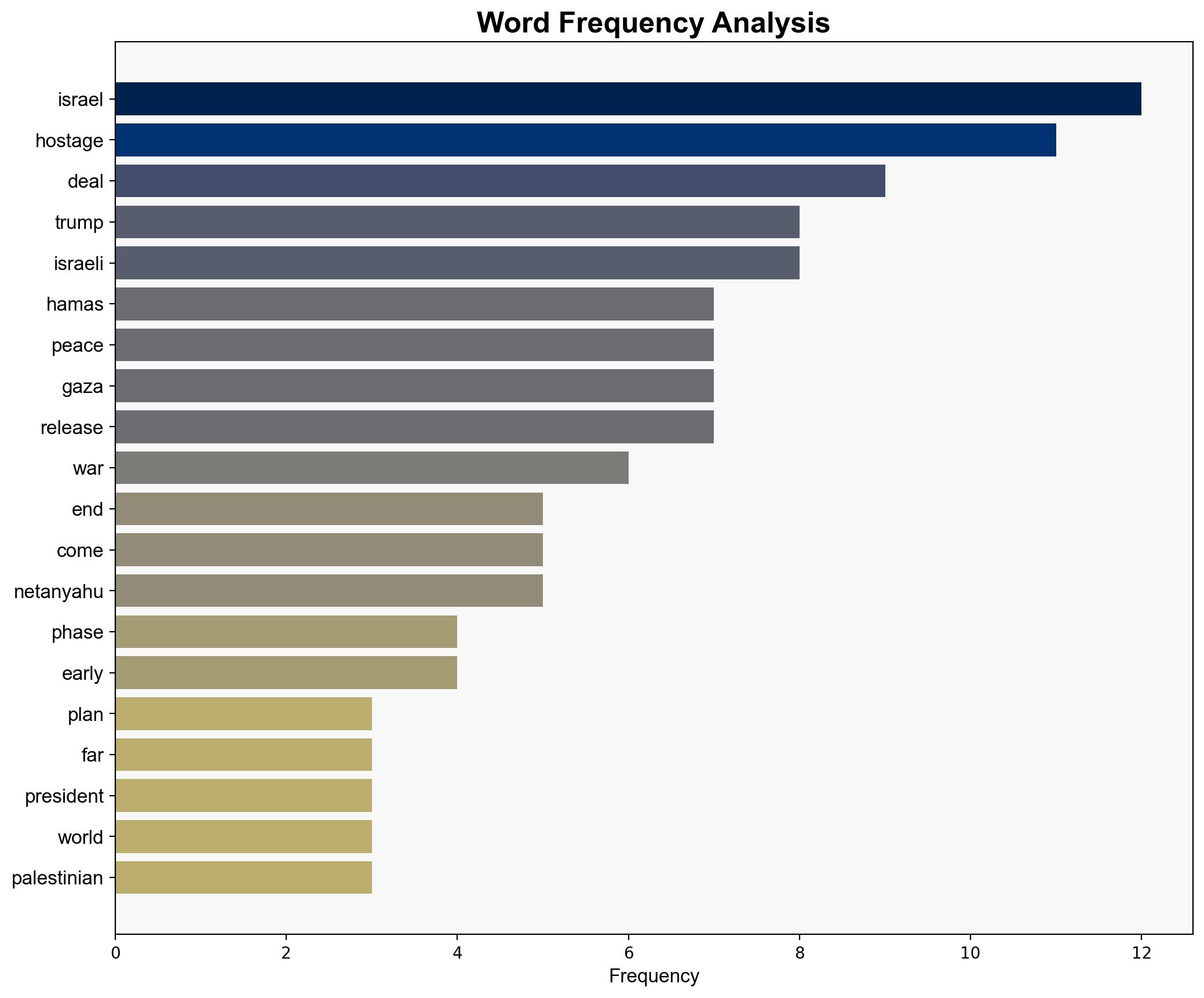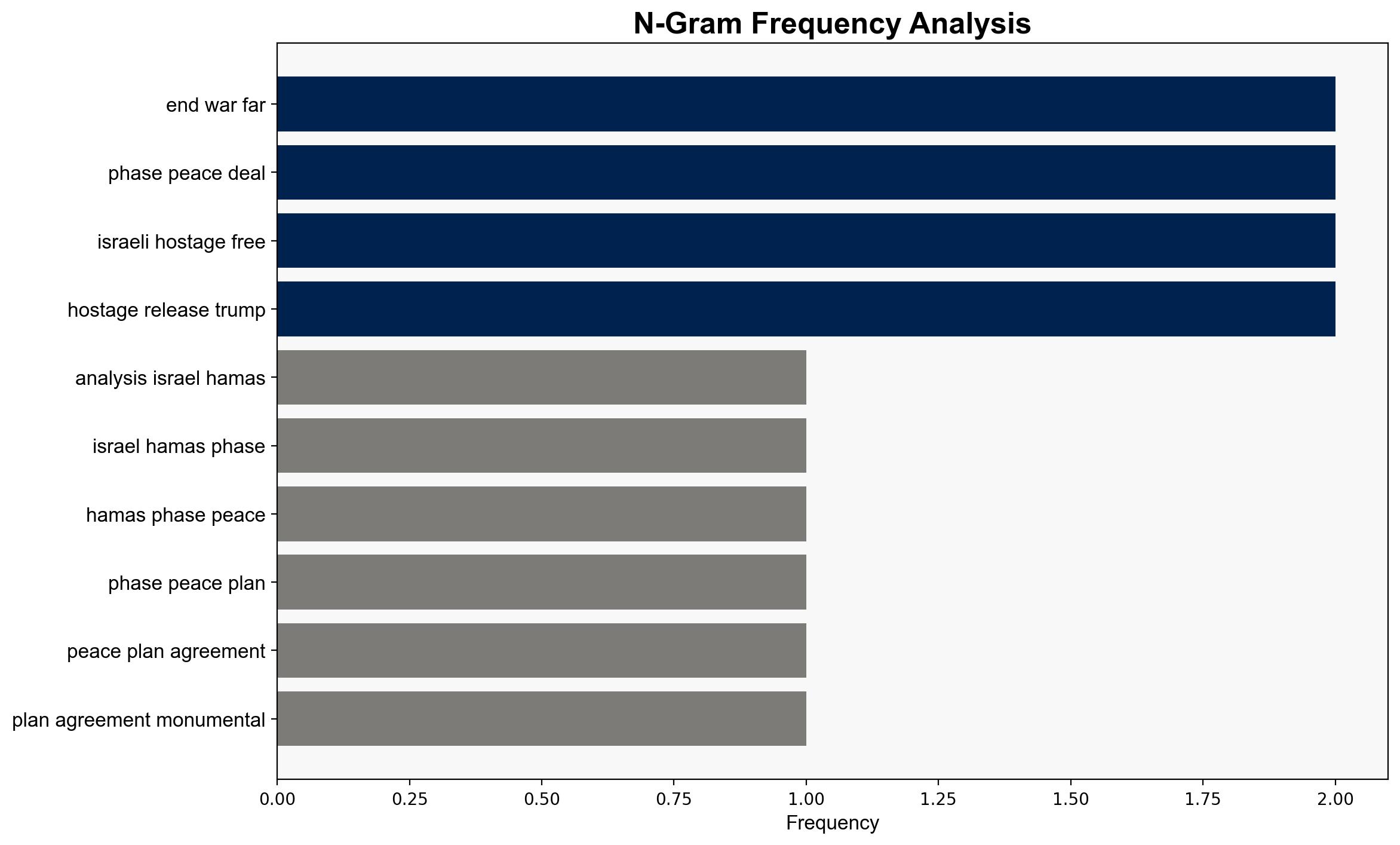Israel and Hamas peace plan agreement is monumental but questions remain – ABC News (AU)
Published on: 2025-10-09
Intelligence Report: Israel and Hamas peace plan agreement is monumental but questions remain – ABC News (AU)
1. BLUF (Bottom Line Up Front)
The recent peace plan agreement between Israel and Hamas is a significant development, but its sustainability is uncertain. The most supported hypothesis suggests the agreement is a temporary measure to reduce immediate tensions rather than a long-term solution. Confidence level is moderate due to the volatile nature of the region and historical precedents. Recommended action includes monitoring compliance and preparing contingency plans for potential escalation.
2. Competing Hypotheses
Hypothesis 1: The peace plan is a genuine step towards a lasting resolution between Israel and Hamas, facilitated by international mediation and pressure, including efforts by Donald Trump.
Hypothesis 2: The agreement is a temporary ceasefire aimed at reducing immediate hostilities, with both parties using the time to regroup and reassess their positions. This hypothesis is better supported by the evidence of ongoing distrust and the conditional nature of the agreement.
3. Key Assumptions and Red Flags
– Assumption: Both parties are committed to the peace process beyond immediate tactical gains.
– Red Flag: The lack of detailed withdrawal plans and the insistence on total withdrawal by Hamas suggest potential for future disputes.
– Cognitive Bias: Over-reliance on the role of international figures like Donald Trump may overshadow local dynamics and historical grievances.
– Missing Data: Specifics on the timeline and conditions for the release of hostages and prisoners are not fully disclosed.
4. Implications and Strategic Risks
– The agreement could temporarily stabilize the region, but failure to address underlying issues may lead to renewed conflict.
– Economic implications include potential impacts on regional trade and investment if hostilities resume.
– Geopolitical risks involve the reactions of neighboring countries and the influence of external actors like the United States and Qatar.
– Psychological impacts on local populations could affect public support for the agreement.
5. Recommendations and Outlook
- Monitor the implementation of the agreement closely, focusing on compliance with withdrawal and prisoner release terms.
- Engage with regional allies to support diplomatic efforts and prepare for possible escalation.
- Scenario Projections:
- Best Case: Successful implementation leads to broader peace talks and regional stability.
- Worst Case: Breakdown of the agreement results in intensified conflict and regional destabilization.
- Most Likely: Temporary reduction in hostilities with ongoing negotiations and sporadic tensions.
6. Key Individuals and Entities
– Donald Trump: Former U.S. President, involved in facilitating the agreement.
– Benjamin Netanyahu: Israeli Prime Minister, advocating for military presence in Gaza.
– Majed Al Ansari: Spokesperson for the Qatari Foreign Ministry, commenting on the agreement.
– Itamar Ben Gvir and Bezalel Smotrich: Israeli far-right ministers expressing skepticism about the deal.
7. Thematic Tags
national security threats, regional focus, peace negotiations, geopolitical dynamics





